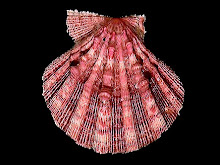Anoline lizards
The following post by this author is from the Turtle Forum.
2/28/2004
Studying the different species of anoline lizards in the Antillean region, the first observation normally made is the occurence of similar ecological types, called ecomorphs (see Rand and Williams 1969 and Williams in 1972) on each of the seperate islands of the archipelago. In 1972 Williams described to science only 6 ecomorphs, these then being divided between dry and wet habitats. In 1983, however, he revisted the area and added to his list of ecomorphs not in existence previously. The ecomorphs that are known to exist at this point in time are: Trunk-Crown Giant, Trunk-Crown Dwarf, Twig, Trunk, Trunk-Ground, Boulder, Rockface-Cave, Bush-Grass, Bush, Aquatic, and Leaf Litter.
Most researchers believe Trunk-Crown or arboreal ancestors were the precursor of all other ecomorphs in anolines, as the treetops and canopies tend to have the greatest diversity of arthropoda. It has been suggested that after some time of evolution to fill a specialist niche in the canopy, successive anolines came to compete with the arboreal species, which forced them through competition to evolve and radiate from the canopy, where the greatest source of food occured, to other areas like the tree's trunk, the ground, or the leaf litter, for example.
It has been speculated through recent genetic research that these groups are totally unrelated to corresponding similar ecomorphs throughout the archipelago, evolving seperately from unrelated anolines. Ecomorphs of particular habitats have similar coloration, bodily dimensions, markings, and prey preferences. "Phylogenetic studies using mitochondrial DNA, conducted by Todd Jackman, in collaboration with Allan Larson and Kevin de Queiroz of the Smithsonian's National Museum of Natural History, clearly indicate that members of the same ecomorph class on different islands are not closely related. Hence, the similar assemblages on each island are the result of convergent evolution. Although such a phenomenon has been suggested in the past for other groups, it has never previously been demonstrated phylogenetically." (Losos Lab - the primary focus of the Losos Lab is on the behavioral and evolutionary ecology of lizards. Major questions concern how lizards interact with their environment and how lizard clades have diversified evolutionarily. Addressing such questions requires integration of behavioral, ecological, functional morphological, and phylogenetic studies. A major focus has been the evolutionary radiation of Caribbean Anolis lizards, but other lizard radiations are also being studied)
Eliciting discussion about comparisons between two more common notions held throughout many Anolis communities would be ideal: did the Anolis specialists (ecomorphs like trunk-crown and twig for example) evolve independently on each island, again and again in the same fashion? Or do you believe that as sea levels rose and larger archipelagos shrunk into smaller ones, populations were forced into isolation where speciation, radiation, and adaptation occurred? How would the latter work out with new ideas on the phylogeny of this genus with DNA evidence possibly disproving the theory? Could it be possible that they are actually related phylogenetically, but the span of time between each radiation is too great for similarities to remain? It is probable that it could be a mixture of both, or perhaps the wrong ecomorphs or species combinations are used during the studies in question.
To research or reference this topic, check out these resouces:
Frost, D. R., and R. Etheridge. 1989. A phylogenetic analysis and taxonomy of Iguanian lizards (Reptilia: Squamata). University of Kansas Museum of Natural History, Miscellaneous publications 81:1-65.
Lazell, J. D. 1992. The family Iguanidae: Disagreement with Frost and Etheridge (1989). Herpetological Review 23:109-112.
Macey, J. R., A. Larson, N. B. Ananjeva, and T. J. Papenfuss. 1997. Evolutionary shifts in three major structural features of the mitochondrial genome among iguanian lizards. Journal of Molecular Evolution 44:660-674.
Schwenk, K. 1994. Systematics and subjectivity: the phylogeny and classification of iguanian lizards revisited. Herpetological Review 25:53-57.
Adaptive Differentiation Following Experimental Island Colonization in ANOLIS
Lizards. Jonathan B. Losos, Kenneth I. Warheit and Thomas W. Schoener in Nature, Vol. 387,
pages 70–73; May 1, 1997.
Cannatella, D. C. & de Queiroz, K. 1989. Phylogenetic
systematics of the anoles: is a new taxonomy
warranted? Syst. Zool., 38, 57–68.
Most strikingly, when one goes to different islands among the Greater Antilles, one sees essentially the same set of ecomorphs on each island (with several exceptions). For example, if one saw a twig anole on Puerto Rico, one could go to each of the other islands and see a very similar looking animal living in the same sort of habitat and behaving similarly. For the most part, this is true for each of the ecomorphs.






0 Comments:
Post a Comment
<< Home